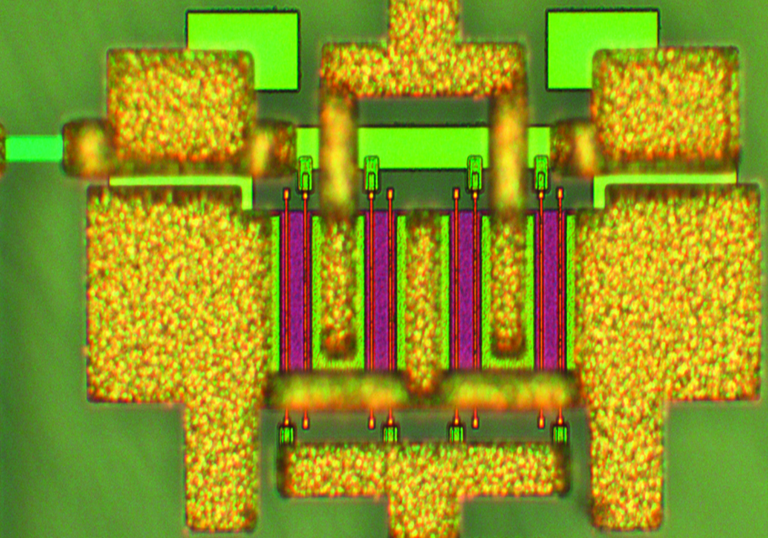Gallium nitride for energy efficient voltage converters
About 40% of the total consumed energy worldide is provided in the form of electrical energy today. It is expected that this share will rise to about 60% by 2040. These enormous amounts of electrical energy have to be not only produced in a sustainable and environmentally friendly way, but also need to be efficiently distributed and used. Power electronical components, circuits and systems are required to produce different voltage and frequency profiles according to the application at hand. It is necessary to minimize the energy losses and production costs of these systems. Untapped energy savings potentials of 20% to 35% can be made accessible by the introduction of more efficient power electronics into renewable energies and the automotive sector. Novel high power transistors made from Gallium Nitride (GaN) enable substantial improvements regarding the basic electrical properties of voltage converters: the specific on-resistance, the switching frequency and in consequence the efficiency of the voltage conversion.
The consideration of the basic physical properties indicates that GaN-based transistors can obtain an on-resistance ten times lower than comparable silicon transistors. Additionally, the switching frequency can be increased, further boosting efficiency. Simulations indicate that the next generation of GaN transistors will exhibit a power efficiency 33% higher than state of the art silicon solutions. With its outstanding physical properties, the product of on-resistance and specific gate capacity being ten times higher than silicon, GaN will revolutionize highly integrated circuits for energy efficient voltage conversion.
In order to increase robustness and lifetime of devices under high voltages AlGaN/GaN layer systems of extremely high quality capable of withstanding electric field strengths of up to 2.5 MV/cm have to be investigated. Current projects are working with single crystalline GaN as substrate material for AlGaN/GaN layer systems. Transistors built from these materials are then evaluated with regard to their electrical properties.

AlGaN/GaN-based high power transistor for high frequencies (Photo: Fraunhofer IAF)

